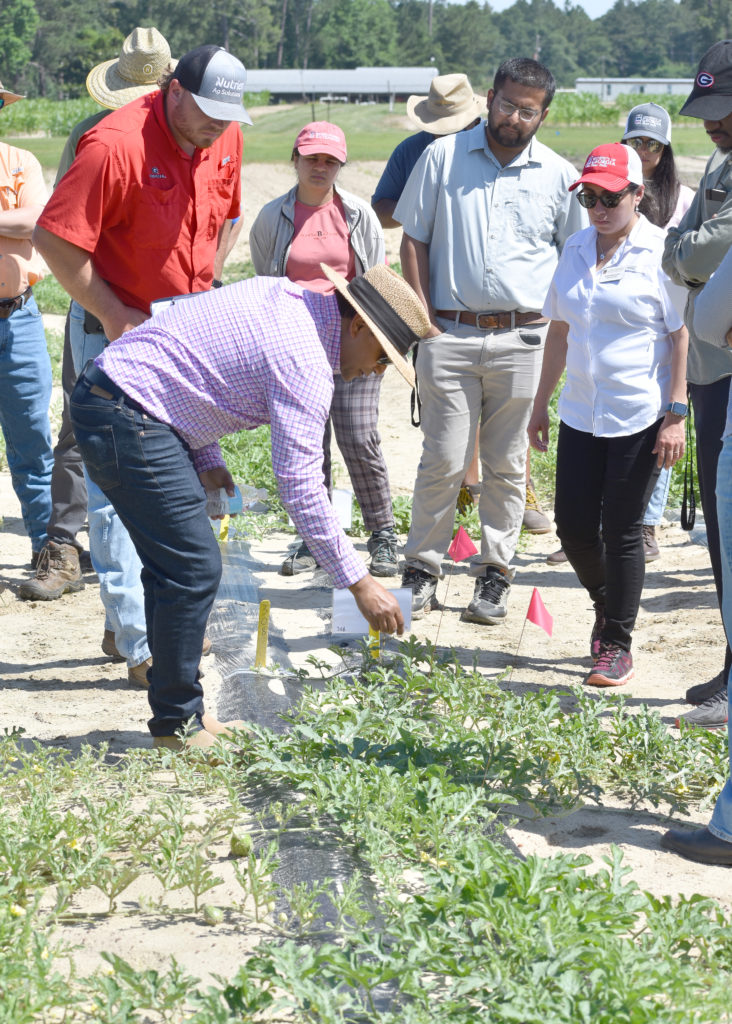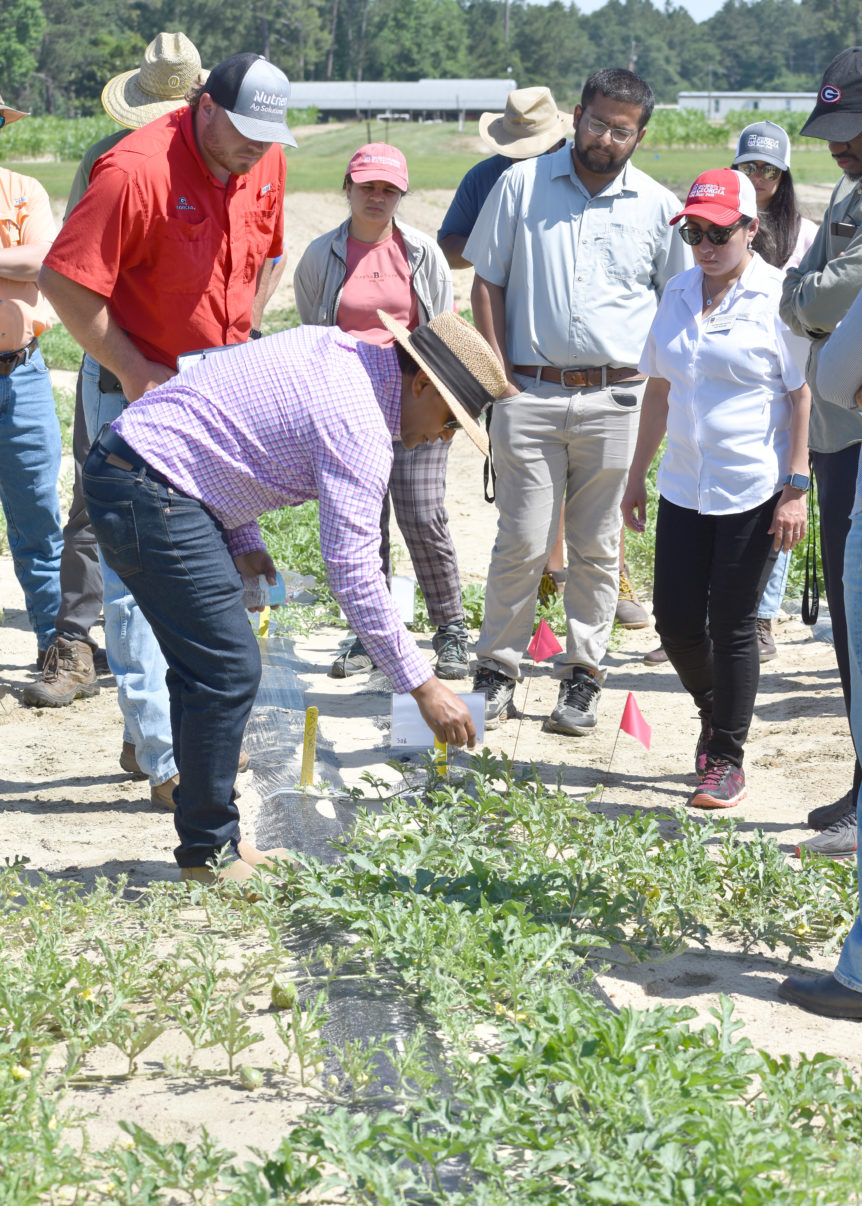
By Clint Thompson
Fusarium wilt’s complexity as a disease threat to watermelons in the Southeast makes it a challenge for research scientists to develop an effective management strategy. University of Georgia Extension Vegetable Plant Pathologist Bhabesh Dutta is researching options so growers can attack the disease from multiple angles.
“The first thing I’m evaluating is the assessment of different novel rootstocks against fusarium wilt. The other two trials I’m looking at are the different fungicide programs. What is the best fungicide program including Proline, Propulse and Miravis Prime? The third trial is a trial by a company by Syngenta. We’re looking at new materials against fusarium,” Dutta said.
“Fusarium is such a big issue in the Southeastern United States. Even a perfect fungicide program will not give you 100% benefit. We’re looking beyond that. We’re looking at rootstocks. One of the rootstocks that have shown great promise is Carolina Strongback. It is commercial, and some of our growers have been using it. Looking beyond Carolina Strongback, what are some other things available?
“It’s always good to have a vision beyond the horizon, because you never know what’s coming.”
Grafting is Expensive
Carolina Strongback is an effective option for watermelon producers, but it is costly, as are grafted plants in general. It is why Dutta recommends grafting as a last resort for farmers who are experiencing fusarium wilt problems.
“There’s a tradeoff to it because grafted plants are still very expensive. I am in conversation with the growers and the agents. If your field is heavily infested with fusarium and you don’t have any other option, your fungicide program does not work, then some acreage you may think about grafting,” Dutta said. “In other cases where fusarium is moderate to low, in that case you can use a fungicide. We are not preaching that the entire acreage should be grafted.”
Fusarium wilt symptoms can appear at any growth stage. If they appear at the seedling stage, the plants will not even make it to vines. Plants infected with the pathogen will eventually die if the infection is severe. The plant can produce fruit if the infection is not as strong, but when it begins using the energy necessary to produce fruit, the plant will likely decline and slowly die.
Making the disease even more complicated is that growers have to make management decisions before the seed or plant or put in the ground.
“Whatever management practices you have to do, you have to do either before planting or at planting,” Dutta said. “Anything you do once the roots are established, it is hard.”










